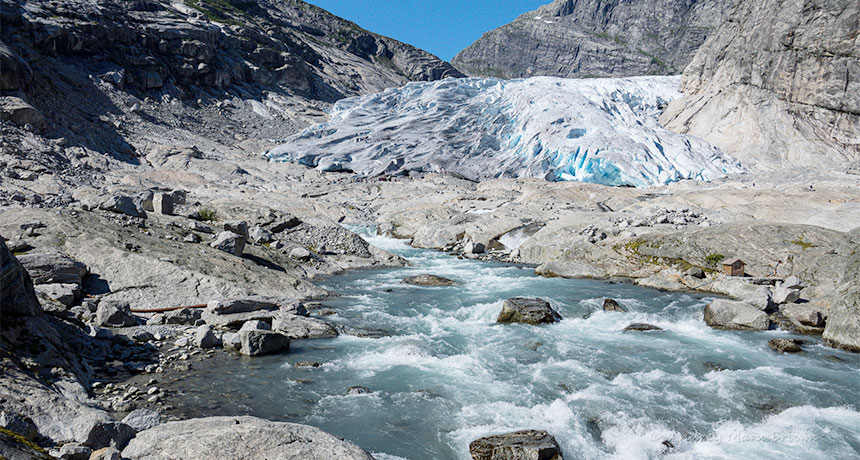Feverish climate is melting glaciers, study confirms
It is ‘virtually certain’ that ice is shrinking as a result of warming

Glaciers, such as this Nigardsbreen one in Norway, are now shrinking because of a global warming, scientists say.
ANDREY MANUBRIUM/FLICKR (CC BY-NC-SA 2.0)
Glaciers are melting. That’s nothing new. But confidence about the role of climate change in their retreat has grown substantially. A new study concludes that the loss of glaciers is, in fact, “categorical evidence of climate change.”
For this study, researchers studied 37 glaciers from around the world. The team calculated how likely it was that each glacier was melting due to a warming climate. Scientists call this kind of calculation a probability. It’s essentially the chance that one thing is due to something else. For 36 of the 37 glaciers studied, there is at least a 90 percent probability that their melting — or retreat — was due to climate change. That means the melting’s link to Earth’s growing fever is now “very likely.”
That’s a bit more worrisome than previous estimates had indicated. Before, the link between global warming and glacier health was rated as only “likely.” That meant there was at least a 66 percent probability that a warming climate was behind the glacial melting.
The ratings come from the Intergovernmental Panel on Climate Change. This group of scientists keeps tabs on all research related to climate. Its new rating of “very likely” links glacier retreats much more directly to climate change.
Making that link hasn’t been easy. A glacier’s ice pack can change as a result of natural shifts in climate. Scientists call this natural variability. El Niño is one driver of natural variability. It’s a semi-regular shift in climate that occurs when the surface water around the equator in the eastern and central Pacific Ocean warms for a long bit of time.
An El Niño can trigger heavy rains on the U.S. West Coast and in South America. Meanwhile, the same event can lead to drought and possibly wildfires in Australia and Southeast Asia. Other factors also can affect a glacier’s ice cover and depth. So natural variability and these other factors make it hard for scientists to assess the role of any human influence on climate.
Gerard Roe is an Earth system scientist. He works at the University of Washington in Seattle. He and his colleagues have just calculated the natural ups and downs of glacier health across the planet. They measured how the ice in each glacier has melted or accumulated over time. They also noted how much the sizes of these glaciers have drifted from their natural range of variation. Finally, the team looked at what was happening in regions close to the glaciers.
These analyses revealed something startling. All but one glacier earned the “very likely” label that it was retreating in size because of climate change. The rating for 21 out of the 37 glaciers was even more alarming. For them, it is “virtually certain” that climate change caused them to melt, the scientists conclude. They shared their findings December 12 in Nature Geoscience.
Glaciers hold about 75 percent of Earth’s freshwater. Their decline is troublesome because it serves as a ‘canary in the coal mine’ for climate change. When someone says something is a canary in a coal mine, it means it is an advanced warning of danger. Glacier melt, the scientists say, is sending humanity such a message about climate change.







